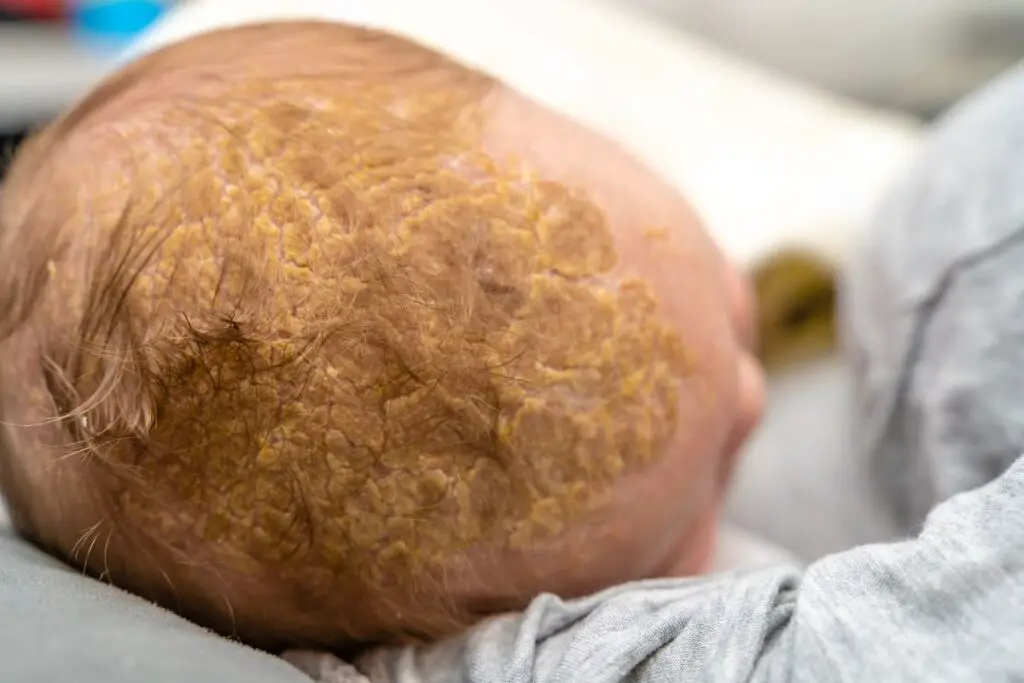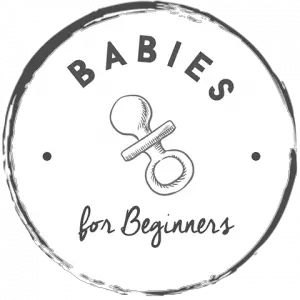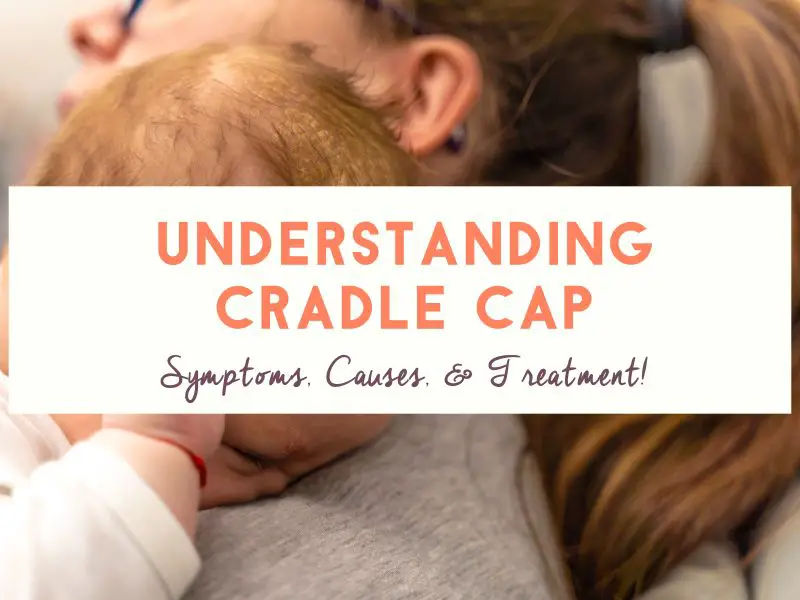Cradle cap is a common condition that affects infants, typically in the first few months of life. While it may be unsightly, it’s not harmful or painful for your baby.
In this article, we’ll cover the symptoms, causes, and treatment options for cradle cap.
Table of Contents
What is Cradle Cap?
Cradle cap is a common, if unsightly, condition affecting babies, usually in the first few months of life. Cradle cap is a form of dermatitis (a general term for inflammation of the skin) and is often referred to as baby dandruff.
Here are a few photos of cradle cap that’s both mild and severe:


Despite its appearance, it’s not painful or harmful to your baby, it’s not contagious, and it’s not caused by poor hygiene, illness, or allergies. It’s also usually easy to remove (see below).
Symptoms of Cradle Cap
Cradle cap appears as flaky yellow or brownish patches of skin on the head or around the eyebrows with scales that may appear cracked, greasy, or even weeping.
It may spread to the forehead, eyelids, ears, and nose, as well as down the back of the neck.
Rarely, it may also show up on other parts of the body where skin folds onto itself, such as the base of the neck, the folds of the groin and diaper area, under the arms, inside the elbows, and behind the knees.
Causes of Cradle Cap
Experts aren’t certain what causes cradle cap; however, one theory is that hyperactivity of the sebaceous glands in the skin on the face and scalp (caused by the surge of hormones that crossed the placenta just before birth) pump out a greasy substance that retains water to prevent dryness. When the oily secretion dries, old skin cells remain trapped on the skin.
Removing Cradle Cap at Home
Most cases of cradle cap can be removed quickly and without much effort by:
Gentle Shampooing
Washing your baby’s hair every 2 to 3 days with a mild baby shampoo can help to prevent the buildup of oil and dead skin cells. Make sure to rinse thoroughly and avoid using any harsh or perfumed products that may irritate your baby’s scalp.
Oil Massage
You can soften the flaky skin on your baby’s scalp by massaging a small amount of vegetable oil, such as olive oil, into your baby’s scalp.
Leave the oil on for around 15 minutes, then gently brush the flakes off using a soft fine-tooth comb, silicone brush, or soft baby brush. Be careful not to brush too hard or for too long, as this can irritate your baby’s scalp.
Wash your baby’s scalp thoroughly after using the oil as leaving the oil on can cause the flakes to stick even more. To help dissolve all the oil, leave the shampoo on for a few minutes before rinsing off.
Seborrhea Shampoos
If the cradle cap is persistent, or if your baby is over six months old, you may try washing his or her hair with a seborrhea shampoo, such as those containing selenium, salicylic acid, or tar.
When to See a Pediatrician for Cradle Cap
If the condition does not improve after a couple of weeks of treatment or if it seems to be developing in other parts of the body, call your pediatrician. He or she may prescribe a mild dandruff shampoo or a cortisone cream to apply to the affected area.
Remember, there is no reason to be alarmed, it doesn’t hurt your baby and is perfectly normal.
Conclusion
Cradle cap is a very common condition that usually resolves on its own without any treatment. It is not something to feel guilty about or worry about as far as discomfort. Even in the rare instance where your baby is uncomfortable or the condition is severe, there are several treatment options available.
With proper care and attention, you can help to relieve the symptoms of cradle cap and keep your baby’s skin healthy and happy.
1406225

